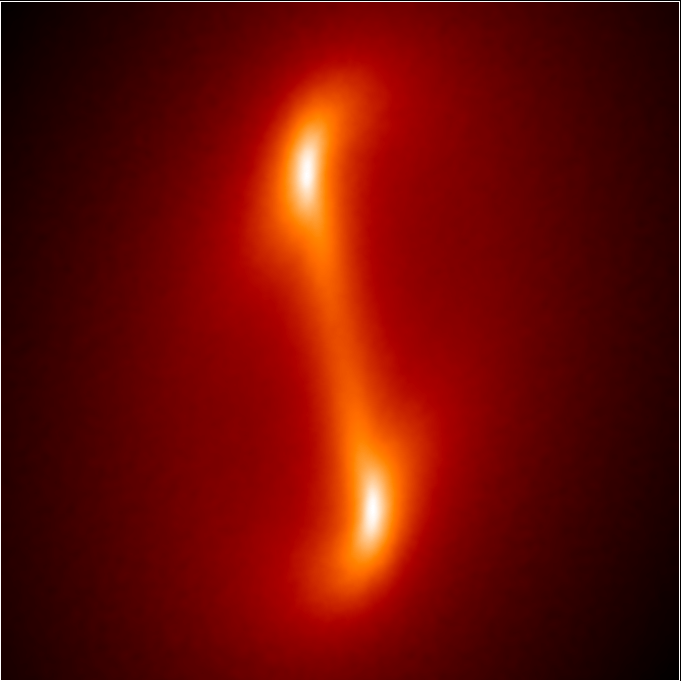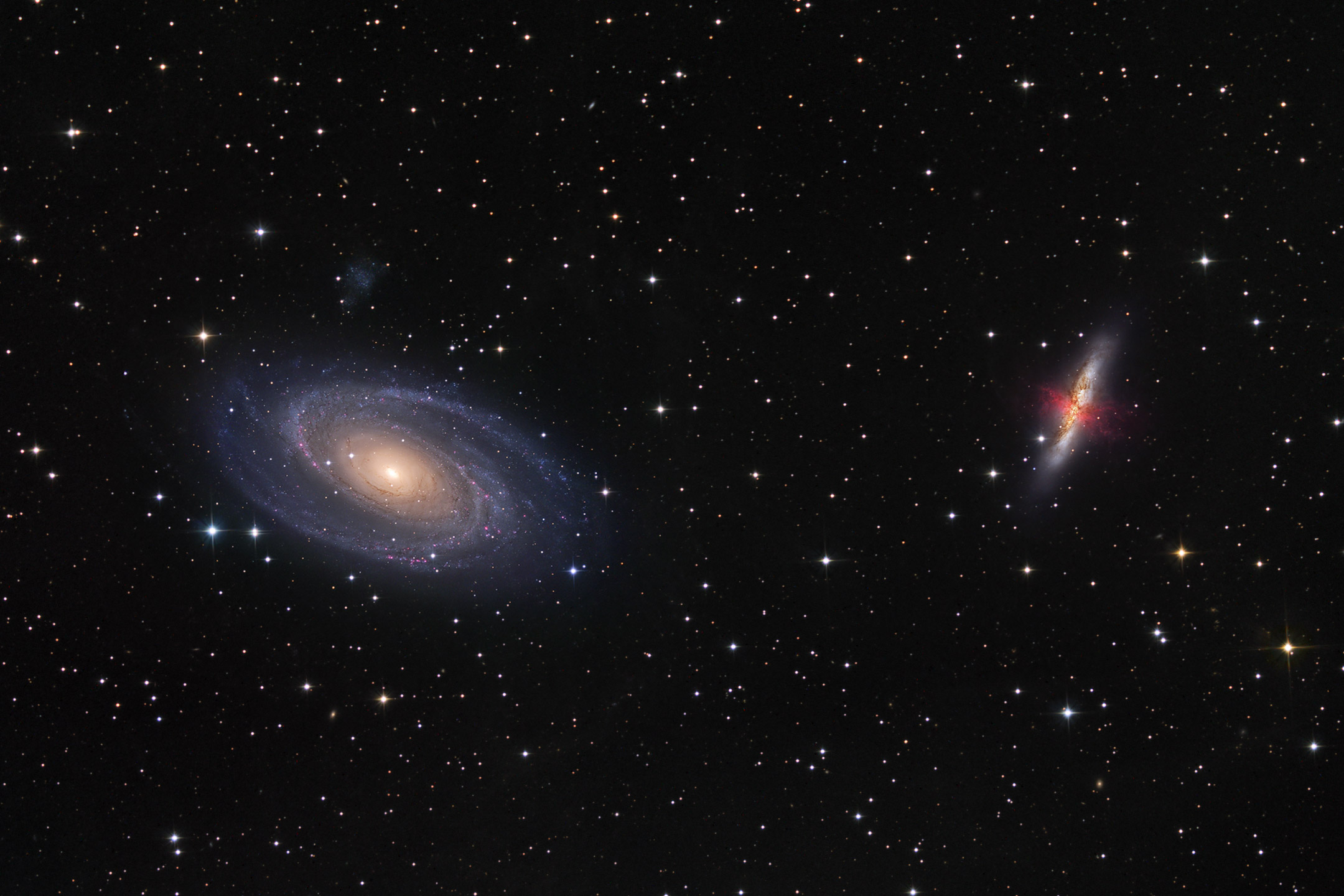
by Nathan Goldbaum | Jun 25, 2011 | Daily Paper Summaries
Title: Galaxy Formation with Self-consistently Modeled Stars and Massive Black Holes. I: Feedback-regulated Star Formation and Black Hole Growth Authors: Ji-Hoon Kim, John H. Wise, Marcelo A. Alvarez, Tom Abel First Author’s Institution: Kavli Institute for Particle Astrophysics and Cosmology; Stanford UniversityIn previous astrobites posts, we’ve talked about how black holes eat gas and the relationship between black hole growth and galaxy evolution. We know that galaxies and black holes grow during their evolution and that something must couple the growth of galaxies and black holes to produce the observed M-σ relation between the mass of supermassive black holes and the typical velocities in galactic bulges. Today, we’ll discuss a new attempt to understand the coupled growth of galaxies and supermassive black holes by directly simulating the growth of a high redshift disk galaxy and its central black hole.Using the cosmological hydrodynamics code enzo, the authors have come up with novel prescriptions for simulating the birth of stars and the feedback of black holes. In this simulation, molecular clouds form when gas cools and collapses. Molecular clouds in turn slowly convert a small fraction of their mass into stars, which can then explode in supernovae, supplying kinetic energy for turbulent gas motions. This is in contrast with previous simulations where gas is converted directly into stars and is more consistent with observations of star formation in the Milky Way and nearby galaxies.The black hole can ionize, heat, and exert forces on the gas in its surroundings via both radiation pressure and by ejecting a collimated jet. This is also a significant improvement compared to previous work in which only thermal feedback was included by dumping an...

by Nathan Goldbaum | Jun 15, 2011 | Daily Paper Summaries
Paper title: Star Formation in 30 Doradus Authors: Guide De Marchi et al. First author’s affiliation: European Space Agency, Space Sciences Department The 30 Doradus star forming region, located 50 kpc away in the Large Magellanic Cloud, is home to the closest super star cluster, R136. Containing about 2400 OB stars, the star cluster emits about 80 million times more radiation than the sun, with a large fraction of the radiative power coming out as ionizing photons. The star cluster has carved out a bubble of ionized gas, the HII region NGC 2070, and is associated with several supernova remnants, the product of previous generations of massive star formation.While much is known about the properties of the massive stars in the region, relatively little is known about the low-mass pre-main-sequence population. Assuming the IMF is well-sampled, the vast majority of the stellar mass should in fact be associated with stars about as massive as the sun. Although these stars should be numerous, they are hard to see directly as they are intrinsically faint and relatively distant. Fortunately, the Hubble Space Telescope recently received an upgrade, making it capable of carrying out the necessary observations.The Wide Field Camera 3 (WFC3) is Hubble’s new panchromatic camera. WFC3 can do accurate photometry at high spatial resolution over a large field of view and is very sensitive in the near UV and IR. This paper focuses on observations in three visual passbands, V-band (centered at 550 nm), I-band (centered at 880 nm), and a narrow-band filter centered on the Hα line. The authors identify all the stars that occur in all three images and that...

by Nathan Goldbaum | Jun 11, 2011 | Career Navigation
Today’s astrobite will be a sequel to a post I wrote a few months ago on using the smoothed particle hydrodynamics (SPH) code Gadget-2. In the first post, I went over how to install Gadget and showed how to run one of the test cases included in the Gadget distribution. Today, I’d like to show how to set up, run, and analyze a simple hydrodynamics test problem of your own.Perhaps one of the oldest topics in astrophysics is the study of binary stars. In 1767, the British natural philosopher John Michell used an early form of statistical analysis to show that the number of closely separated pairs of stars in the night sky is far higher than what one might expect from a randomly distributed field of stars. How do these binary pairs form? Modern astrophysics offers several answers, and in today’s post, we will focus on one possible mechanism: the direct formation of a binary star pair by the collapse of a rotating isothermal sphere of gas.We will approach this problem using a formulation first proposed by Alan Boss and Peter Bodenheimer in 1979 and later modified by Andreas Burkert and Peter Bodenheimer in 1993. The so-called standard isothermal test case models the gravitational collapse of a one solar mass, spherical, rigidly rotating molecular cloud with a small-amplitude m = 2 density perturbation.If we wish to simulate the collapse, we first need to set up the initial conditions for the simulation. You can obtain initial conditions files from the following url: http://ngoldbaum.net/astrobites/SICtest.tgz. You can also generate your own initial conditions using the supplied codes. To summarize, the initial conditions are...

by Nathan Goldbaum | May 18, 2011 | Daily Paper Summaries
Title: The History of Star Formation in Galaxy Disks in the Local Volume as Measured by the ACS Nearby Galaxy Survey Treasury Authors: Benjamin F. Williams et al. Affiliation: Department of Astronomy, University of Washington The star formation history of the universe is an area of active research. As galaxies consume their gas into stars, newborn massive stars emit copious amounts of ionizing radiation and explode in powerful core-collapse supernovae. Both of these radiative and mechanical feedback mechanisms can significantly affect the development of galaxies, resulting in the galaxy populations we see today. Deep photometry from space and ground-based observatories have allowed astronomers to directly measure the in situ star formation history of the universe by counting the number of star forming galaxies we see at earlier epochs of the universe’s evolution. One could alternatively observe the age and mass of resolved stellar populations in nearby galaxies to infer the star formation history of these systems. These two disparate measurements should agree, except for departures due to cosmic variance. In this paper, the authors use deep Hubble observations of a volume-limited sample (the ACS Neaby Galaxy Treasury Survey, ANGST for short) of nearby galaxies to measure the star formation using stellar population synthesis modeling.Measuring the star formation history of a resolved stellar population requires detailed models for the positions of stars in a color-magnitude diagram (CMD for short). A CMD is just an observer’s version of the more commonly discussed Hertzprung-Russell diagram. Models of stellar evolution and synthetic spectral modeling of the model stars are sufficiently advanced that the luminosity and color of practically any star can be predicted...

by Nathan Goldbaum | May 14, 2011 | Career Navigation
Today I have the pleasure to introduce one of our faculty members here at UC Santa Cruz to the Astrobites community. Jonathan Fortney is an expert on the atmospheres and interiors of giant planets and has a unique perspective on the process of science in a newly emerging field. Instead of a specific scientific topic, Jonathan wanted to impart some wisdom on the criteria he uses to choose a research topic to work on.“For my scientific temperament I needed a field that was more controversial, more open-ended and new, where quick was useful and sloppy did not matter too much because it would all change soon anyway.” –Ed Salpeter (ARAA, 2002, 40:1–25)When scientists write about their own work and their careers, you can learn a lot from their experience. Given all the writing that scientists do, it is unfortunately rare for someone to actually write about the science they do, rather than just reporting results and ramifications. There is precious little written about why a certain problem was chosen or why the astronomer found it interesting in the first place.From time to time I like to read through what I call the “looking back on my career” article in the Annual Review of Astronomy and Astrophysics. There is one of these every year. They get a famous astronomer to write about the highs (and lows?) of their careers. I’ve read a several of these, from giants in the field like Ed Salpeter and Al Cameron. You get a good feel for what the exciting questions were at various points of their careers, and how that changed the focus of...






